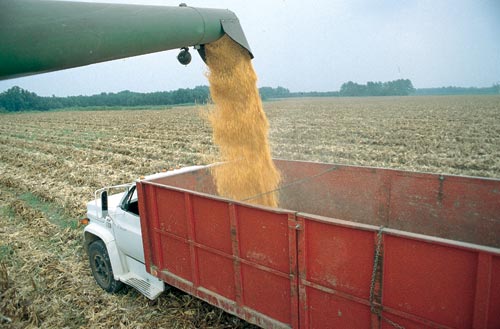
USDA increased the estimated carryover for the 2010-11 corn marketing year from 675 million to 730 million bushelsUSDA estimated carryover for the 2011-12 corn crop at 900 million bushels.USDA increased this year’s cotton carryover estimate from 1.6 million to 1.75 million bales and pegged the 2011-12 carryover at 2.5 million bales.
May 20, 2011

USDA’s May crop report proved one thing: The laws of economics have not been repealed. By that I simply mean that if you keep the price of any commodity high enough for long enough, someone will find a way to either grow more of it or use less of it. This certainly held true for both corn and cotton in the May report.
USDA increased the estimated carryover for the 2010-11 corn marketing year (which ends Aug. 31) from 675 million to 730 million bushels. This was done primarily by cutting the export projection by 50 million bushels. This lessens the risk of a squeeze on old-crop corn at the end of the summer. They also estimated carryover for the 2011-12 crop at 900 million bushels.
USDA increased this year’s cotton carryover estimate from 1.6 million to 1.75 million bales. They pegged the 2011-12 carryover at 2.5 million bales.
The bottom line: The supply of $5 corn remains tight, but there is a surplus of $7 corn because fewer users are willing to buy it at that price. And at 85 cents, cotton supplies are tight — but not at $1.50.
Weather market will continue: Some incredibly bad weather this spring — ranging from cold and flooding in parts of the Midwest to the severe drought in the southern Plains — will result in fewer corn and cotton acres than expected. While that is fairly well factored into the market, if Mother Nature balances the cool, wet spring with hot dry weather in the summer, it has the potential to push prices higher.
Counting on that happening before making new-crop sales is a big gamble, though.
The other factor that should not be overlooked is economic uncertainty throughout the world. As I write this, crude oil, gold and silver futures all have confirmed major tops. If speculators continue to exit long positions, the down-move could be severe. Grains and cotton may not escape that panic.
Putting it all together: Major commodity bull markets have always turned into major bear markets. This one has just started. What goes up will come down and it is best that we all remember that. Market prices are still very high from a historical perspective and well above production costs, but the last month has certainly been a decision-making time for anyone wanting to take advantage of high prices.
You May Also Like



